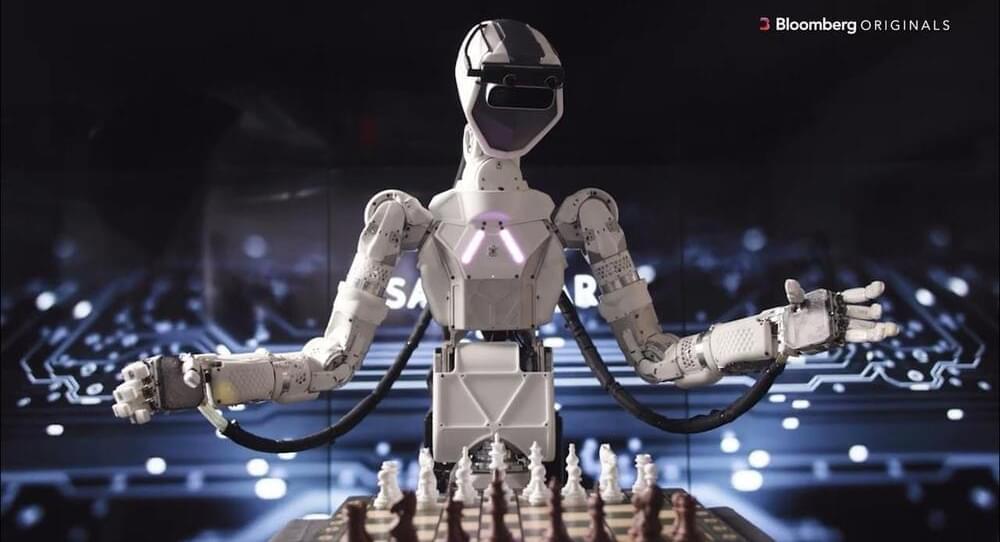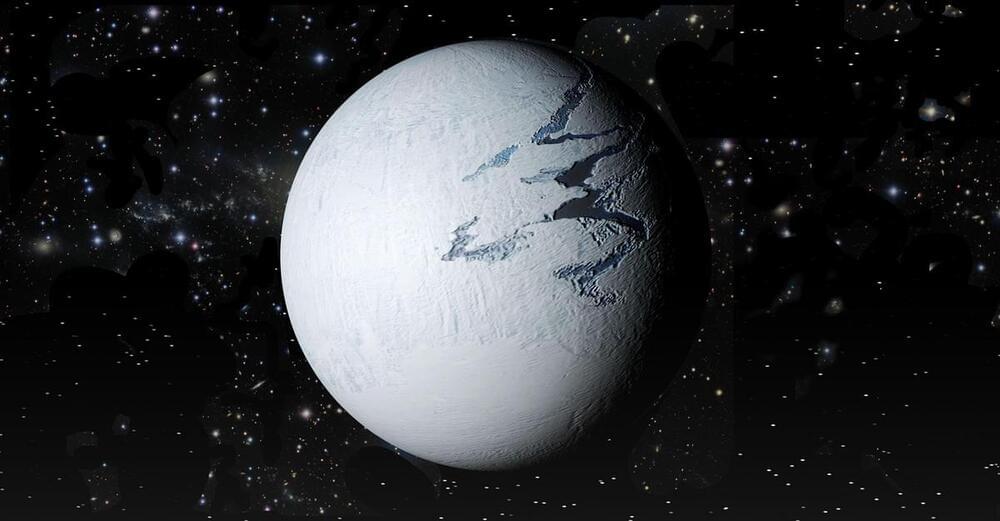Archive for the ‘climatology’ category: Page 46
Feb 9, 2023
Tracking ocean microplastics from space
Posted by Saúl Morales Rodriguéz in categories: climatology, satellites
![]()
New information about an emerging technique that could track microplastics from space has been uncovered by researchers at the University of Michigan. It turns out that satellites are best at spotting soapy or oily residue, and microplastics appear to tag along with that residue.
Microplastics—tiny flecks that can ride ocean currents hundreds or thousands of miles from their point of entry—can harm sea life and marine ecosystems, and they’re extremely difficult to track and clean up. However, a 2021 discovery raised the hope that satellites could offer day-by-day timelines of where microplastics enter the water, how they move and where they tend to collect, for prevention and clean-up efforts.
Continue reading “Tracking ocean microplastics from space” »
Feb 8, 2023
The Ice Age Has Nothing on ‘Snowball Earth’
Posted by Dan Breeden in category: climatology
Five hundred million years before the dawn of dinosaurs, strange animals ruled a frozen planet.
Feb 6, 2023
Melt: Scientists discover a new molten layer under Earth’s crust
Posted by Gemechu Taye in category: climatology
Here is something new from Earth’s interiors.
A team of researchers at the University of Texas at Austin (UTA) has found a new layer under Earth’s crust called “melt,” according to a press release. It comprises hot molten rocks and reveals useful insights about our planet’s tectonic plate activity.
Interestingly, these plates are constantly moving, and their movement is linked to the occurrence of earthquakes, tsunamis, and volcanic eruptions. Moreover, tectonic motion is so powerful; that it could also lead to the formation of new mountain ranges and even new continents.
Continue reading “Melt: Scientists discover a new molten layer under Earth’s crust” »
Feb 3, 2023
Even An AI Is Telling Us We Have Already Missed Making The Paris Climate Agreement 1.5 Celsius Target
Posted by 21st Century Tech Blog in categories: climatology, mapping, robotics/AI
Hurricane Sandy was an extreme weather event. But a Stanford-Colorado State AI forecasts accelerated warming with a high probability of future Sandys.
An AI neural network studies historical maps and data to accurately predict a rise of 1.1 C by 2022, 1.5 by the mid-2030s, and 2.0 by 2050.
Feb 2, 2023
Genetic engineering sheds light on ancient evolutionary questions
Posted by Saúl Morales Rodriguéz in categories: bioengineering, climatology, genetics, sustainability
Cyanobacteria are single-celled organisms that derive energy from light, using photosynthesis to convert atmospheric carbon dioxide (CO2) and liquid water (H2O) into breathable oxygen and the carbon-based molecules like proteins that make up their cells. Cyanobacteria were the first organisms to perform photosynthesis in the history of Earth, and were responsible for flooding the early Earth with oxygen, thus significantly influencing how life evolved.
Geological measurements suggest that the atmosphere of the early Earth—over three billion years ago—was likely rich in CO2, far higher than current levels caused by anthropogenic climate change, meaning that ancient cyanobacteria had plenty to “eat.”
But over Earth’s multi-billion-year history, atmospheric CO2 concentrations have decreased, and so to survive, these bacteria needed to evolve new strategies to extract CO2. Modern cyanobacteria thus look quite different from their ancient ancestors, and possess a complex, fragile set of structures called a CO2-concentrating mechanism (CCM) to compensate for lower concentrations of CO2.
Feb 2, 2023
Earth’s Inner Core May Right Now Be in The Process of Changing Direction
Posted by Quinn Sena in category: climatology
Few of us give much thought to Earth’s swirling, spinning contents until some sudden movement, an earthquake or a volcanic eruption, jolts us to our senses.
Geoscientists, though, are a little more clued into the dynamics of Earth’s guts, and have just discovered that Earth’s solid inner iron core – which usually spins within a near-frictionless molten outer envelope – appears to have slowed to a grinding halt.
Before anybody panics and searches for a copy of a terrible 20-year-old science fiction movie predicting such an event in hopes of inspiring a solution, it’s not the first time record of such an event. It’s not even the first in recent history.
Feb 1, 2023
IBM AI Helps NASA Researchers Mine Earth Data
Posted by Gemechu Taye in categories: climatology, robotics/AI, sustainability
NASA has a massive amount of data and it receives more every day. While some of the data is processed immediately, much of the data is archived to be processed later, sometimes years later. This situation needs to change if researchers are to utilize the data to investigate critical issues with dynamically changing characteristics like global climate change. To increase its ability to process and use this data in a timely manner, NASA’s Marshall Space Flight Center announced a joint development program with IBM Research to process the NASA data using IBM’s foundation AI technology.
To put this task into perspective, the GPT-3 data set, which led to the development of ChatGPT AI platform that recently passed a Wharton MBA exam, represents about 45TB (terabytes) of data. By comparison, NASA estimates that its data set could be upwards of 250PB (petabytes). With 1PB equal to 1,000TB, the NASA data set is over 5,000 times larger than the GPT-3 data set, making this a monumental task, but the benefits could be ground-breaking.
Previously, IBM estimated that 90% of data collected is never used, and in their press invitation, IBM and NASA noted that “Currently, half of all scientific findings come from archived data, which makes it challenging for researchers to study ever-evolving threats such as climate change.” Efficiently mining the enormous amount of archival data needs the power of AI. IBM Research’s massive cloud resources, the collective experiences of the company’s AI experts, and its AI foundation model technology will help NASA filter and analyze earth-science data in days or months rather than years or even decades.
Feb 1, 2023
Introducing Bloomberg Originals
Posted by Jose Ruben Rodriguez Fuentes in categories: business, climatology, finance, sustainability

Bloomberg Originals offers bold takes for curious minds on today’s biggest topics. Hosted by experts covering stories you haven’t seen and viewpoints you haven’t heard, you’ll discover cinematic, data-led shows that investigate the intersection of business and culture. Exploring every angle of climate change, technology, finance, sports and beyond, Bloomberg Originals, is business as you’ve never seen it.
——-
Like this video? Subscribe: https://www.youtube.com/Bloomberg?sub_confirmation=1
Become a Quicktake Member for exclusive perks: https://www.youtube.com/bloomberg/join.
Jan 31, 2023
Instagram’s co-founders introduce a new social app…for news reading
Posted by Gemechu Taye in categories: climatology, robotics/AI
Can lightning strike twice? That’s apparently the question being raised today with the public introduction of the next social app built by Instagram’s co-founders, Kevin Systrom and Mike Krieger. The duo have launched a new venture to explore social apps, according to a report published in The Verge, which includes the debut product Artifact, a personalized news reader.
The app itself is not yet publicly available but offers a waitlist where interested users can sign up. As described, it sounds like a modern-day twist on Google Reader, a long-ago RSS newsreader app that Google shut down back in 2013. Except in this case, Artifact is described as a newsreader that uses machine learning to personalize the experience for the end user, while also adding social elements that allow users to discuss articles they come across with friends. (To be fair, Google Reader had a similar feature, but the app itself had to be programmed by the user who would add RSS feeds directly.)
Artifact will first present a curated selection of news stories, The Verge’s article notes, but these will become more attuned to the user’s interests over time. Some of the articles will come from big-name publishers, like The New York Times, while others may be from smaller sites. Other key features will include comment controls, separate feeds for articles posted by people you follow alongside their commentary and a direct message inbox for discussing posts more privately.
















